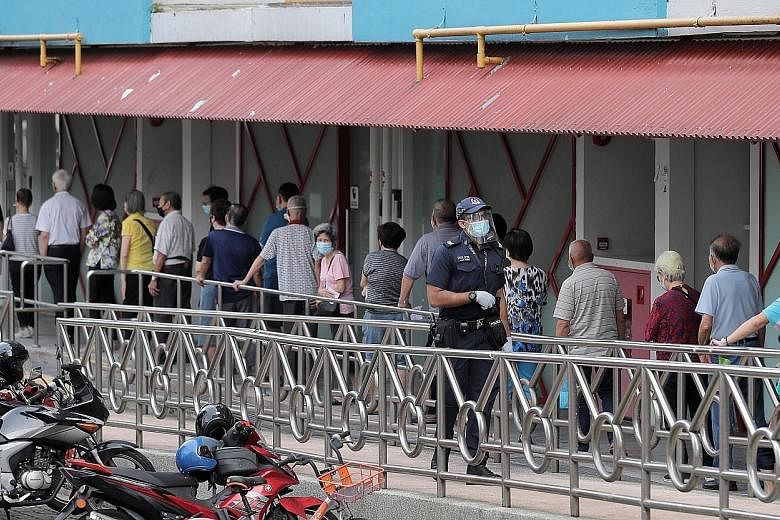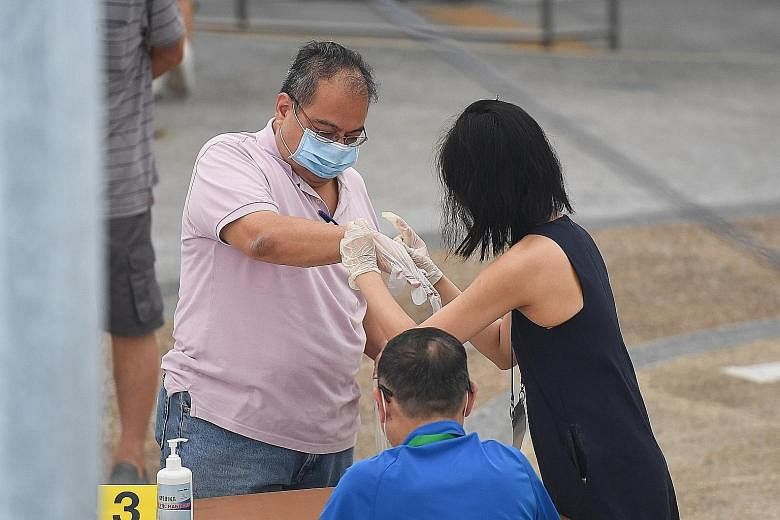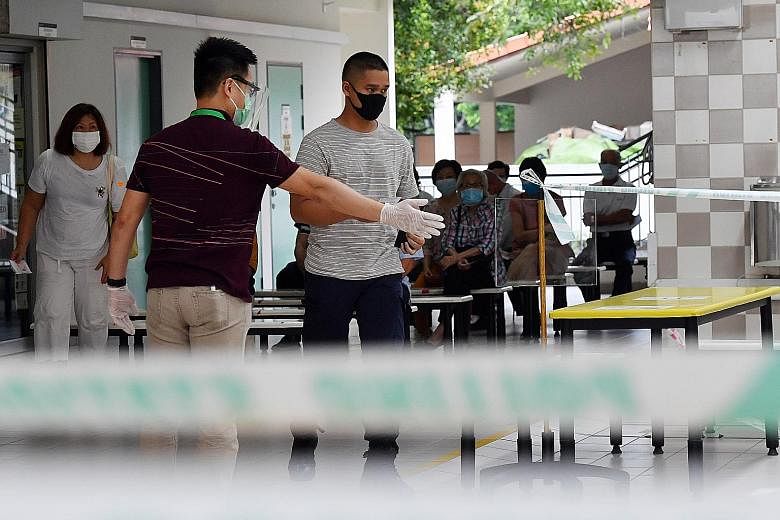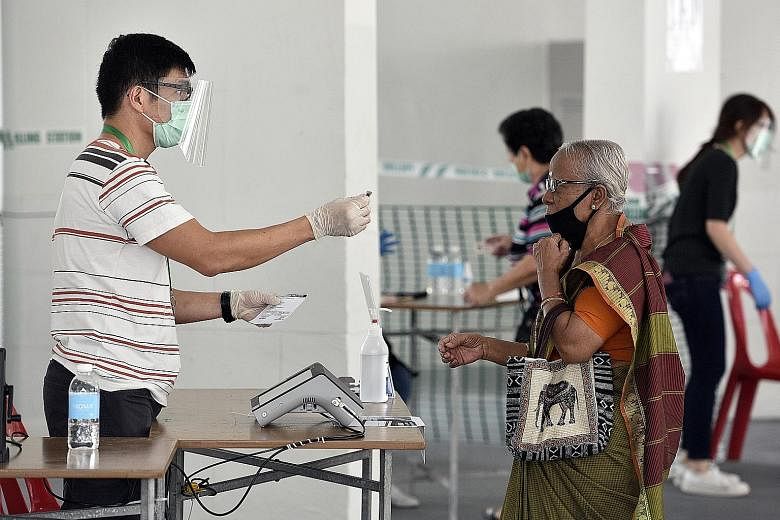The precautionary measures put in place to protect voters during the Covid-19 outbreak reduced voting efficiency and led to long queues at some polling stations, the Elections Department (ELD) said yesterday.
For instance, allocated time bands given to voters in the July 10 election failed to spread out voter turnout throughout the day.
Even though time bands in the morning were for senior voters, one-third who showed up then were not seniors, the ELD said.
The higher concentration of these seniors in the morning also slowed voter flow-through rate, as more of them needed support and assistance from election officers.
Other stations with significantly higher proportions of younger voters saw long queues in the afternoon owing to the large number of voters and the shorter seven-hour voting window which excluded the morning slots reserved for seniors and the special voting hour from 7pm to 8pm reserved for those serving stay-home notices.
The ELD acknowledged that in retrospect, it should not have concentrated all senior voters in the morning.
Another factor that caused the long queues was the safe management measures such as temperature taking, requiring voters to put on disposable gloves and hand sanitising.
The requirement that voters stand 1m apart also contributed to the long queues, the ELD said.
"ELD did away with the requirement to don disposable gloves in the early part of the morning of Polling Day, as voters would have already sanitised their hands. With this, the queue situation at most polling stations improved significantly by 11am," the ELD said.
"Nevertheless, the other necessary precautionary measures... meant that voters, in general, spent a longer time to queue and vote, as compared with past elections."
Resources at large polling stations could also have been better distributed, the ELD said.
-
Choke points
TIME BANDS
Even though time bands in the morning were for senior voters, one-third who showed up then were not seniors, the ELD said.
SAFE MANAGEMENT MEASURES
Another factor that caused the long queues was safe management measures such as requiring voters to put on disposable gloves.
ALLOCATION OF RESOURCES
The ELD said 25 large polling stations should have been given more election officers or e-registration devices.
E-REGISTRATION DEVICES
The e-registration devices posed issues as voters were asked to self-scan their NRICs due to the Covid-19 situation.
There were 1,097 polling stations in GE2020, up from 832 in GE2015, and there were an average of 2,400 voters for each station. About 36,000 election officers were deployed across the stations, a 20 per cent increase from 2015.
The ELD said that 25 polling stations, or about 2.3 per cent of all stations, served more than 4,400 voters, and 22 of the 25 experienced long queues.
The previous general election also saw a number of polling stations serving larger numbers of voters, the ELD noted, adding that size alone is not a factor for the long queues.
"Size combined with the precautionary measures must have aggravated the situation," the ELD said.
"Some premises also had two polling stations, and the two queues merged into one some distance away from the polling area, further lengthening the queues."
The department said the 25 large polling stations should have been given more election officers or e-registration devices.
The e-registration devices also posed issues. The ELD said the original plan, before Covid-19 struck, was for election officers to scan voters' NRICs.
"However, with the Covid-19 situation, voters were asked to self-scan their NRICs. ELD had intended to do roadshows to familiarise voters with the e-registration device, but these had to be called off owing to the Covid-19 situation.
"As a result, voters were unfamiliar with the e-registration devices, and this process took longer than planned."
Rei Kurohi





